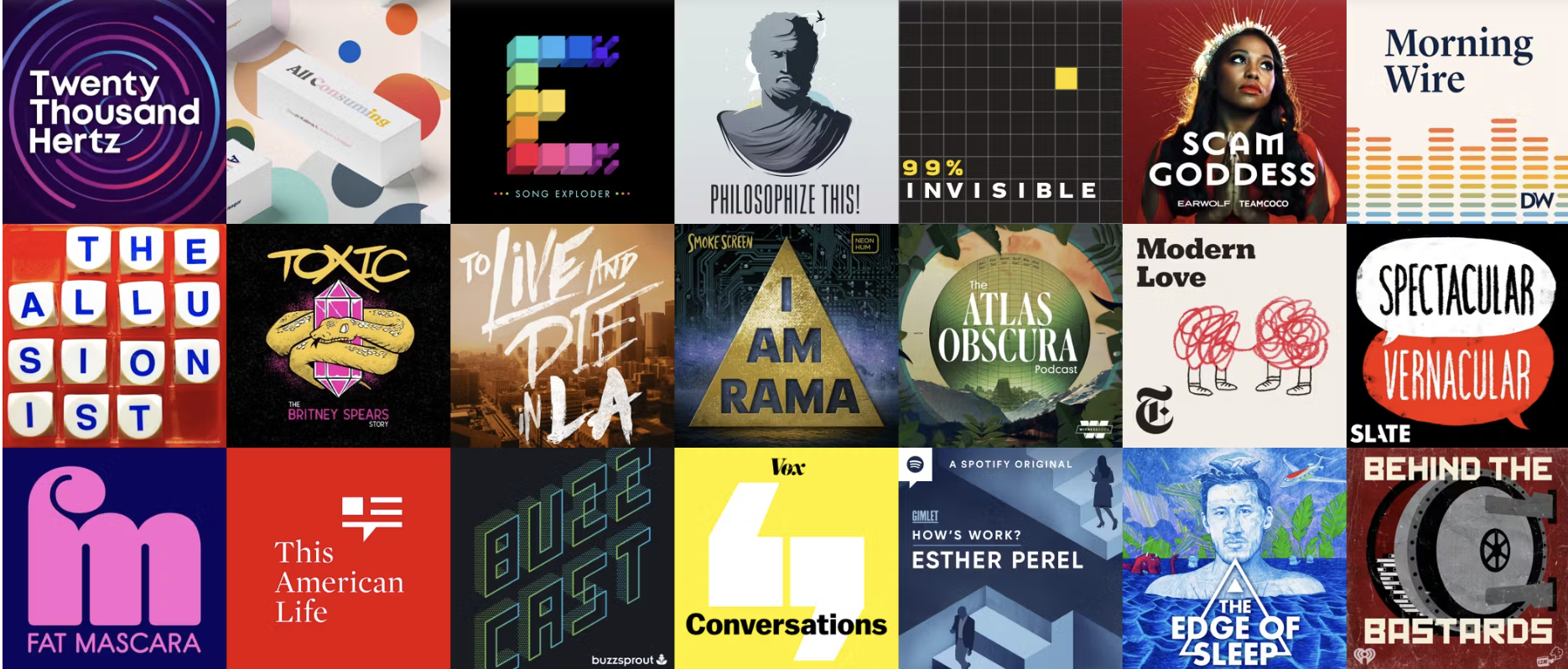Podcast Branding: Where To Start, Ideas, Guidance

Your podcast is more than just your voice and a few audio files. It’s a brand—a message, a visual identity, and a promise to your audience. Whether you’re launching your first show or rebranding an existing one, you might be wondering:
Should I brand my podcast myself or hire a professional?
This guide breaks down everything you need to know to make the right call for your time, budget, and goals.
What Does Podcast Branding Actually Include?
Click here for a tutorial on how to make cover art + ideas
Podcast branding isn’t just about a good-looking logo. It covers every element that shapes how listeners perceive your show:
- Podcast name & tagline
- Mission statement / niche positioning
- Cover art (with proper size and specs for Apple Podcasts, Spotify, etc.)
- Logo (if separate from artwork)
- Color palette & typography
- Intro/outro music and voice
- Tone of voice (for show notes, episode titles, social posts)
- Website, email, and social graphics
- Guest and listener experience materials
Most podcasters skip steps like tone of voice or guest experience. Strong branding goes beyond visuals.
DIY Podcast Branding: Pros, Cons, and Recommended Tools
Pros
- 💼 Lower cost
- ✅ Full creative control
- 🚀 Learn new skills
- ✉️ Faster iterations (make updates anytime)
Cons
- ⏳ Time-consuming
- ❗ Steep learning curve for design and branding strategy
- 🌐 Risk of amateurish visuals
- 📊 No built-in feedback or strategy help
DIY Tools to Consider
- Canva: Easy drag-and-drop design
- Looka or Namecheap Logo Maker: Logo creation
- Coolors.co: Generate color palettes
- Descript: Edit audio, create branded intros/outros
- Adobe Express: More advanced than Canva, still beginner-friendly
Tip: Stick to one or two fonts and 2-3 core brand colors. Consistency matters more than complexity.
Hiring a Pro: Pros, Cons, and Cost Breakdown
Pros
- 🎨 Polished, professional results
- ⏱️ Saves time
- 🧩 Strategic alignment with your goals and audience
- 🤖 Get expert guidance on positioning and tone
Cons
- 💸 Can be expensive
- 🕵️♂️ Less creative control
- ❌ Hard to revise on the fly
- 💬 You still need to brief them properly
Typical Pricing
| Service | Cost Range |
|---|---|
| Podcast cover art only | $100 – $500 |
| Full visual branding kit | $500 – $2,000+ |
| Branding strategy + design | $2,000 – $5,000+ |
| Branding template kits | $30 – $150 (DIY hybrid) |
Tip: Always ask for podcast-specific portfolio samples before hiring. A general graphic designer may not understand platform specs or listener psychology.
DIY vs Hiring Comparison Table
| Feature | DIY Branding | Hiring a Pro |
| Cost | Low (often free) | Medium to high |
| Time investment | High | Low |
| Design expertise needed | Yes | No |
| Strategic insight | Minimal | Strong |
| Flexibility for edits | High | Medium |
| Risk of inconsistency | Higher | Lower |
| Best for… | Hobbyists, low-budget launches | Serious podcasters, business shows |
Hybrid Options: Best of Both Worlds
You don’t have to go all-in on either side. Many podcasters mix and match:
- ✅ Buy a pre-made branding kit (customize it yourself)
- ✅ Hire a designer just for cover art, then DIY the rest
- ✅ Book a one-time consult to help with branding decisions
- ✅ Use templates for social media + audiograms
How to Decide: Ask Yourself These Questions
- ❓ Do I have more time or more money right now?
- ❓ Is my podcast a side project or a brand pillar for my business?
- ❓ Do I enjoy using design tools like Canva?
- ❓ Do I need something that looks premium to attract sponsors or press?
- ❓ Am I rebranding a show that already has an audience?
Use these answers to guide whether to DIY, hire, or blend the two.
FAQ: Podcast Branding Help
Do I need a logo if I already have cover art?
Not necessarily. Cover art often is your logo. But if you want to create merch or social profile avatars, a simplified logo can help.
Can I use AI tools for branding?
You can! AI logo and design tools are getting better, but still require a designer’s eye. Use them as a starting point, not a final result.
What makes podcast branding different from personal branding?
Podcast branding is more focused on the show and audience. Your personal brand may be broader. Align them if the show is under your name.
How often should I update my branding?
Minor tweaks over time are fine, but avoid full rebrands unless you change your format, niche, or audience.
Final Thoughts: Your Brand Is What They Remember
Whether you go full-DIY, hire a designer, or find a hybrid path, the goal is the same:
Make your podcast memorable, recognizable, and aligned with your mission.
Your brand is the first impression a listener gets before they ever hit play. Make it count.